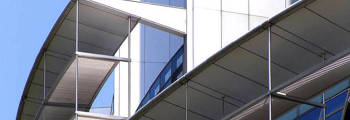09/03/2020
On 20 January 2020, Housing Secretary Robert Jenrick warned that the slow pace of improving building safety standards will not be tolerated, and announced proposals for new measures that go further to ensure residents are safe in their homes.
A regulator will be at the heart of a new regime, established as part of the Health and Safety Executive (HSE). The HSE will begin to establish the new regulator “in shadow form immediately”, ahead of a full implementation following legislation.
The new regulator will have responsibility for:
- implementing a new regulatory regime for higher-risk buildings;
- overseeing the wider system for regulating safety and performance of other buildings; and
- increasing the competence of relevant regulators and industry professionals.
The Regulator will also be responsible for appointing a chief inspector of buildings and recruiting inspection staff.
The changes will also include increasing the responsibility on building owners for ensuring that their buildings are safe. The Ministry of Housing, Communities and Local Government’s report “Building a Safer Future”, published in June 2019, proposes that every building owner must appoint an “accountable person” who’s duty will be to ensure that the building is safe during occupation. Such a significant burden means that this role is likely to be difficult to fill.
Mr Jenrick also made clear that he will start to publicly “name and shame” building owners where remediation has not started to remove unsafe Aluminium Composite Material (ACM) cladding from their buildings.
Another change will be that of the “tall building” threshold, with plans to lower this from 18 metres to 11 metres. This comes as part of the government launching its consultation on the combustible cladding ban.
The proposed changes come amidst calls for a new Fire Safety Act to come in this year, which would impose that any building that provides accommodation, such as hotels, hospitals and flats, be fire safety checked irrespective of height. It would also ensure that sprinklers are installed in all buildings that are 11m or higher, as opposed to the current 30m. The need for sprinklers in the construction industry could therefore face a dramatic increase, which could create problems if manufacturers are not able to produce them fast enough to keep pace with the construction of buildings that need them, as well as buildings of 11m that are already in existence but will need sprinklers following the implementation of the legislation.
The Act would also mean that Fire Risk Assessments would include the assessment of doors and facades.
Commenting on the announcements of 20 January, Mr Jenrick said: “The government is committed to bringing about the biggest change in building safety for a generation” and “Progress on improving building safety needs to move significantly faster to ensure people are safe in their homes and building owners are held to account.”


